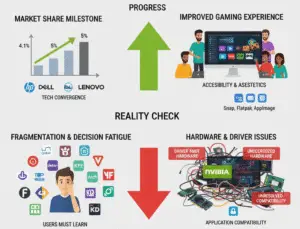
Agricultural Biotechnology in 2025: How Science is Revolutionizing Farming

Introduction: The Quiet Revolution in Our Fields
Imagine crops that grow during droughts, potatoes that never bruise, and wheat packed with extra vitamins. This isn’t science fiction—it’s agricultural biotechnology, and by 2025, it will help feed our growing planet while protecting the environment.
In this article, we’ll explore:
-
What agricultural biotech really means
-
5 groundbreaking innovations coming by 2025
-
Real examples already changing farms today
-
How this affects your food and our planet
What is Agricultural Biotechnology?
Agricultural biotechnology uses scientific tools to improve plants, animals, and microorganisms. It’s like giving nature a carefully designed upgrade to solve specific problems.
Traditional vs. Biotech Farming
| Method | How It Works | Example |
|---|---|---|
| Traditional Breeding | Crossing similar species over years | Developing sweeter corn over 20 generations |
| Biotechnology | Directly editing genes in a lab | Creating fungus-resistant bananas in 2 years |
5 Game-Changing Biotech Innovations for 2025
1. Climate-Resilient Super Crops
Problem: Climate change causes droughts and floods
Solution: Crops that survive extreme weather
-
Example: Water Efficient Maize for Africa (WEMA) yields 25% more during droughts
-
Coming in 2025: Rice varieties that can grow in salty ocean water
2. Biofortified Foods
Problem: 2 billion people lack essential nutrients
Solution: Crops with boosted nutrition
-
Golden Rice: Provides Vitamin A (prevents childhood blindness)
-
2025 Development: Iron-rich beans to combat anemia
3. Gene Editing Without GMOs
Tool: CRISPR (genetic “scissors”)
Benefits:
-
No foreign DNA added (non-GMO)
-
Faster than traditional breeding
-
Example: Mushrooms that don’t brown (already FDA-approved)
4. Agricultural Vaccines
Innovation: Edible vaccines grown in plants
-
Current Use: Hepatitis B vaccine in lettuce
-
2025 Potential: Flu vaccines in bananas
5. Sustainable Livestock Tech
Advances:
-
Disease-resistant pigs (no antibiotics needed)
-
Lab-grown meat (requires 90% less land)
-
2025 Goal: CRISPR-edited cattle that produce less methane
Real-World Success Stories
In Kenya:
BT cotton (insect-resistant) increased yields by 50%, reducing pesticide use
In Bangladesh:
Eggplant farmers using pest-resistant varieties saw:
-
80% less pesticide use
-
40% higher profits
In the USA:
Arctic Apples (non-browning) reduce food waste in schools
Why This Matters for Everyone
For Farmers:
-
Higher yields with fewer chemicals
-
Better income stability
For Consumers:
-
More nutritious food
-
Lower prices (up to 30% cheaper by 2025)
For the Planet:
-
50% reduction in pesticide use possible
-
Preserves forests (need less farmland)
Addressing Common Concerns
Myth: “GMOs are unsafe”
Fact: 2800+ studies confirm safety (National Academy of Sciences)
Myth: “Biotech helps only big companies”
Fact: 90% of biotech farmers are in developing countries
The Future: What’s Coming After 2025?
-
Plant-based seafood from algae
-
Self-fertilizing crops (reduce fertilizer needs)
-
AI-designed plants for specific climates
How to Stay Informed
-
Look for “Non-Browning” or “Drought-Tolerant” labels
-
Follow @GlobalBiotech on social media
-
Ask your grocery store about biotech options
Conclusion: Farming’s Smart Future
By 2025, agricultural biotechnology will help:


Agricultural Biotechnology in 2025: The Future of Farming is Here
A New Era of Smarter Farming
Picture this: a farmer in Kenya checks her drought-resistant corn thriving despite no rain for weeks. Meanwhile, a scientist edits wheat genes to pack more protein into each grain. This is agricultural biotechnology in 2025 – where science meets soil to grow better food for everyone.
In this easy-to-understand guide, we’ll explore:



What Exactly is Agricultural Biotechnology?
It’s using science to improve crops and livestock. Think of it like giving nature helpful upgrades to solve farming problems.|
Traditional vs. Biotech Farming Compared
| Method | How It Works | Time Needed | Example |
|---|---|---|---|
| Traditional | Breeding plants/animals over generations | 10-20 years | Developing sweeter strawberries |
| Biotech | Directly improving genes in a lab | 2-5 years | Creating disease-resistant bananas |
5 Exciting Biotech Advances Coming in 2025
1. Climate-Smart Super Crops
Problem: Extreme weather ruins harvests
Solution: Crops that withstand drought and floods
-
Now: Drought-tolerant maize in Africa yields 25% more
-
2025: Rice that grows in salty ocean water
2. Nutrition-Packed Foods
Problem: 2 billion people lack essential nutrients
Solution: Biofortified staple crops
-
Golden Rice: Prevents childhood blindness with Vitamin A
-
Coming Soon: Iron-rich beans to fight anemia
3. Precision Gene Editing (CRISPR)
How It Works: Like using molecular scissors to edit DNA
Benefits:
-
Faster than traditional breeding
-
More precise improvements
-
Example: Non-browning Arctic® apples reducing food waste
4. Natural Pest Control
Innovation: Crops that resist insects without pesticides
-
BT Cotton: Reduced pesticide use by 80% in India
-
2025 Goal: Cut global pesticide use in half
5. Greener Livestock
Advances Coming:
-
Pigs resistant to deadly diseases
-
Cows producing less methane (a major greenhouse gas)
-
Lab-grown meat using 90% less land
Real Success Stories Changing Lives
In Bangladesh:
Farmers growing pest-resistant eggplant:


In Kenya:
Smallholder farmers using drought-tolerant maize:

In the USA:
Non-browning Arctic® apples:

Why This Matters to Everyone
For Your Family’s Health:
-
More nutritious food options
-
Fewer pesticide residues on produce
For Your Grocery Budget:
-
Lower food prices (up to 30% savings)
-
More stable food supply year-round
For Our Planet:
-
50% less pesticide runoff poisoning rivers
-
More forests saved from being cleared for farmland
-
Less water needed for irrigation
Answering Common Concerns
Q: Is biotech food safe to eat?
A: Yes! Over 2,800 studies and 280 scientific organizations confirm safety.
Q: Who benefits most?
A: 90% of biotech farmers are smallholders in developing countries.
Q: Isn’t this just for big companies?
A: No – public research develops many biotech crops for small farmers.
The Exciting Future Beyond 2025
Coming next:



How You Can Stay Informed
-
Look for “Drought-Tolerant” or “Non-Browning” labels
-
Ask your grocery store about biotech options
-
Follow @AgBiotechNews for updates
-
Visit local farm shows to see innovations
Final Thoughts: Farming’s Brighter Future
By 2025, agricultural biotechnology will help:







